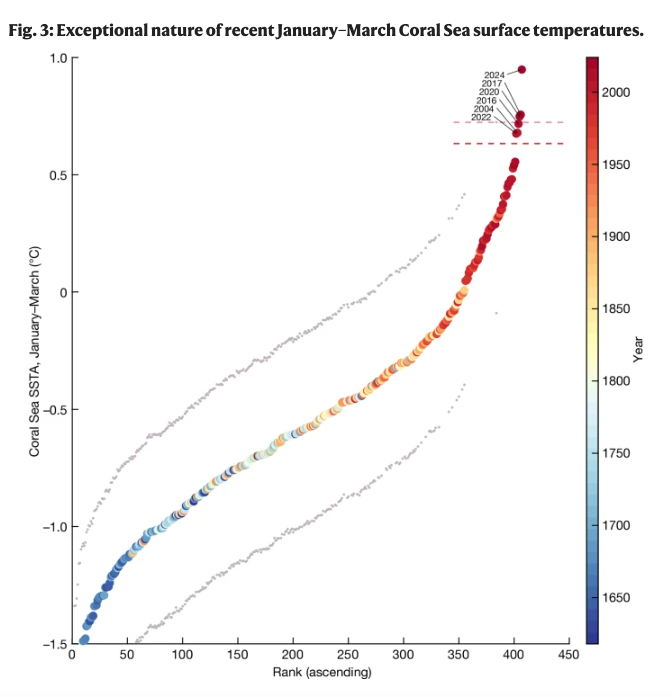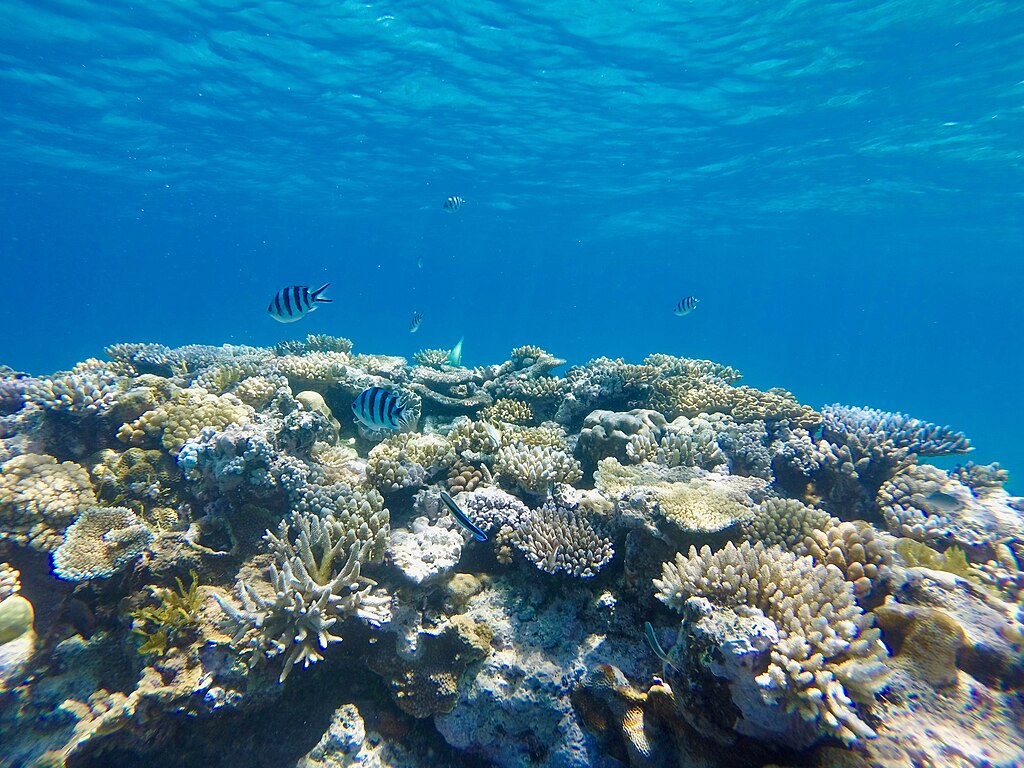Researchers have found that sea temperatures on Australia’s Great Barrier Reef are the warmest they’ve been in 400 years, with five of the six warmest years in the 407-year ocean record occurring since 2016.
They did this by drilling and chemically analyzing coral skeleton cores at 22 locations across the 2300km long reef. According to the skeletal record, the Coral Sea’s surface temperature reached an average of 1.73 °C above the 1618–1899 average. Cooler temperatures prevailed pre-1600, but warming during the industrial era has been evident since the early 1900s and there is a warming trend of 0.09?°C per decade for 1900–2024 and 0.12?°C per decade for 1960–2024.
Stress bands in coral skeletal cores have provided potential evidence for pre-1980s bleaching in the GBR and the Coral Sea, such as during the 1877–78 El Niño. However, stress bands are evident in relatively few cores before 1980, suggesting that severe mass bleaching did not occur in the 1800s and most of the 1900s. In contrast, mass bleaching occurred in 2004, 2016, 2017, 2022, and 2024, with 2024, 2020, and 2017 being the worst.
Mass bleaching in both 2016 and 2017, influenced by the presence of an El Niño event in 2016, led to the death of at least 50% of shallow-water (depths of 5–10?m) reef-building corals.
The paper’s lead author says it’s clear that the reef will not survive in its current form if temperatures continue to rise. Ocean temperatures on the GBR peak from January to March, and the full extent of 2024’s mass bleaching event (and record-high temperatures,) are still not yet fully known.

Further threats
On top of the new threat from near-annual mass coral bleaching, the Great Barrier Reef is also experiencing declining calcification rates, outbreaks of crown-of-thorns starfish, severe tropical cyclones, and overfishing, according to the paper, all of which have placed compounding detrimental pressures on the reef ecosystem.
“Our new multi-century reconstruction illustrates the exceptional nature of ocean surface warming in the Coral Sea today and the resulting existential risk for the reef-building corals that are the backbone of the GBR.” The paper’s authors concluded. “The reconstruction shows that SSTs were relatively cool and stable for hundreds of years and that recent January–March ocean surface heat in the Coral Sea is unprecedented in at least the past 400 years. The coral colonies and reefs that have lived through the past several centuries, and that yielded the valuable data on which our reconstruction is based, are themselves under serious threat. Our analysis of climate-model simulations confirms that human influence is the driver of recent January–March Coral Sea surface warming. Together, the evidence presented in our study indicates that the GBR is in danger. Given this, it is conceivable that UNESCO may in the future reconsider its determination that the iconic GBR is not in danger. In the absence of rapid, coordinated, and ambitious global action to combat climate change, we will likely be witness to the demise of one of Earth’s great natural wonders.”
Coral regrowth
With another, more positive report coming out just one day before this one, stating that coral coverage on the GBR was at a 38 year high in 2023, it shows evidence than the reef can recover after catastrophic events like mass bleaching. If bleaching becomes an annual event however, and is further impacted by more frequent, severe tropical cyclones, we fear for its ability to recover between ever more frequent events.
Citation
To access the full paper go to Henley, B.J., McGregor, H.V., King, A.D. et al. Highest ocean heat in four centuries places Great Barrier Reef in danger. Nature 632, 320–326 (2024). https://doi.org/10.1038/s41586-024-07672-x
Main image credit Lukem99, CC BY-SA 4.0



